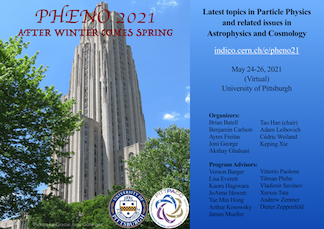Speaker
Description
In this work (arXiv: https://arxiv.org/abs/1810.11420, DOI: 10.1140/epjc/s10052-020-7822-0) a new physics scenario shows that four-fermion operators of Nambu-Jona-Lasinio (NJL) type have a strong-coupling UV fixed point, where composite fermions F (bosons Π) form as bound states of three (two) SM elementary fermions and they couple to their constituents via effective contact interactions at the composite scale Λ≈O(TeV). We present a phenomenological study to investigate such composite particles at the LHC by computing the production cross sections and decay widths of composite fermions in the context of the relevant experiments at the LHC with pp collisions at √s=13 TeV and √s=14 TeV. Systematically examining all the different composite particles F and the signatures with which they can manifest, we found a vast spectrum of composite particles F that has not yet been explored at the LHC. Recasting the recent CMS results of the resonant channel pp→e+F→e+e−qq¯′, we find that the composite fermion mass mF below 4.25 TeV is excluded for Λ/mF = 1. We further highlight the region of parameter space where this specific composite particle F can appear using 3 ab−1, expected by the High-Luminosity LHC, computing 3 and 5 σ contour plots of its statistical significance.
